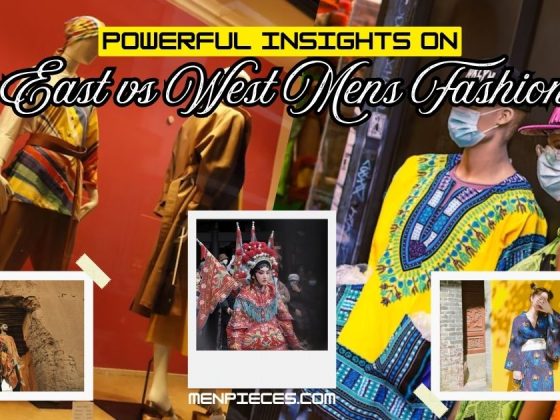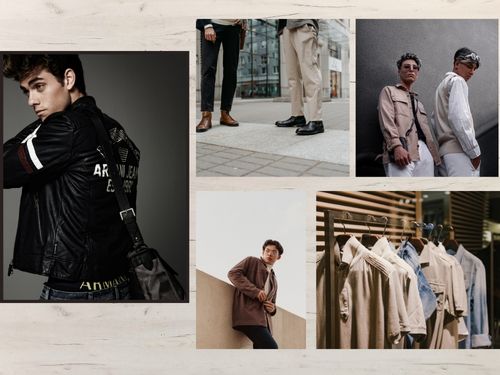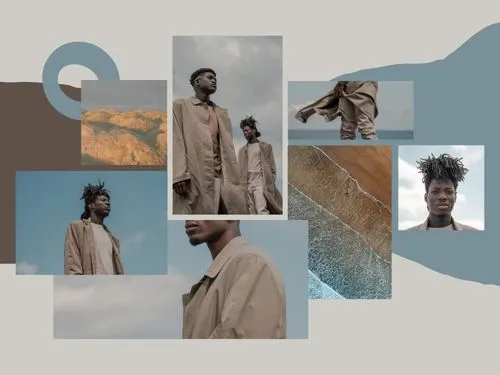Monochrome dressing has long been associated with a reputation for being sleek, minimal, and sophisticated. But let’s be honest—it can also be tricky. Dress head-to-toe in one shade and you risk looking flat, uninspired, or worse, like you’re wearing a uniform. The secret to pulling it off isn’t about piling on accessories or switching to bold prints. Instead, it’s all about variation in texture and tone. By thoughtfully mixing fabrics, finishes, and subtle shade differences, a monochrome outfit goes from “safe” to “statement.”
Why Monochrome Works in the First Place
Streamlined & Chic
Versatile Across Occasions
One of monochrome’s greatest strengths is its ability to adapt easily. Switch out the fabrics and finishes, and suddenly the same color palette works everywhere. Picture a white linen shirt with tailored trousers for a daytime meeting, then swap in a silk blouse and ivory heels for evening elegance. The consistency of color keeps the look cohesive, while texture and material choices shift the mood. This makes monochrome an effortless choice for people who want fewer outfit dilemmas and more flexibility throughout their day.
Timeless & Trend-Resistant
A Blank Canvas
But the real secret is this: monochrome isn’t just about color. The outfits that stand out and feel dynamic are those that lean into variation in depth. Playing with texture and tone is what transforms a look from “safe” to “striking.”
The Power of Texture in Monochrome Styling
Texture is the game-changer in making monochrome visually interesting. Think of it as adding dimension and character to your outfit. Even when the colors are identical, varied fabrics can create contrast that draws the eye in.
Key Textures to Experiment With
One of the most innovative ways to elevate a monochrome outfit is to play with texture. When every piece is the same color, the eye naturally seeks out contrasts in fabric weight, sheen, and movement. Think of texture as the brushstroke in your style canvas—it gives depth, dimension, and personality.
Knitwear & Wool
Nothing says cozy sophistication like knitwear paired with tailored wool. A chunky cable-knit sweater in cream against smooth beige wool trousers instantly feels layered, even though the color palette is simple. Knits add softness and warmth, while wool provides structure and refinement. This pairing is especially effective for fall and winter when you want both comfort and style. Add a matching wool coat to complete the look, and you have a monochrome outfit that feels polished yet approachable.
Leather & Faux Leather
Leather is a power move in monochrome styling. Its natural sheen immediately stands out, creating visual contrast against matte fabrics like cotton or ribbed knits. A black leather jacket layered over a black ribbed turtleneck, for example, adds depth without straying from the color scheme. Faux leather trousers in camel, paired with a matching knit sweater, create a similar effect with a softer edge, whether real or vegan. Leather introduces a sleek and edgy vibe that elevates monochrome from safe to striking.
Silk & Satin
Silk and satin are your go-to fabrics when you want monochrome to whisper luxury. Their fluid drape and subtle shine bring movement into an otherwise flat color palette. Imagine a champagne satin blouse tucked into taupe tailored trousers, or a midnight-blue satin slip dress with a matte navy blazer. They feel elegant without screaming for attention. These textures work beautifully for evening looks, weddings, or any occasion where understated glamour is desired.
Denim
Denim may be casual, but in monochrome dressing, it’s surprisingly versatile. By mixing different washes of the same color, you create tonal layers that look intentional. Picture light-wash jeans with a chambray shirt and a mid-wash denim jacket—the differences in texture and shade keep the outfit from looking flat. Denim also pairs well with softer fabrics, such as cashmere or linen, adding structure and a relaxed edge to your look.
Sheer Fabrics
Sheer fabrics, such as chiffon, mesh, or organza, are excellent for balancing heavier textures. They bring lightness, movement, and subtle intrigue to monochrome outfits. A sheer black blouse paired with a black blazer, or a cream mesh top layered over a white bralette, with linen trousers, adds an unexpected twist without overwhelming the look. Sheer fabrics also give monochrome a playful, sensual energy, especially when styled with oversized or structured pieces.
[wp_GAM_ADS_InPost12_shortcode]
Suede & Velvet
Few textures feel as rich and indulgent as suede and velvet. They’re especially powerful in deeper color palettes—think midnight blue velvet trousers or a burgundy suede jacket. These fabrics add dimension through their plush surfaces, creating a tactile appeal that makes the outfit feel more luxurious and refined. Use them sparingly to avoid overwhelming the outfit—pairing a suede skirt with a knit sweater, or a velvet blazer with matte trousers, strikes the perfect balance.
The Importance of Tone Variation
Color may be the foundation of monochrome dressing, but it’s tone variation that transforms it from basic to breathtaking. Without tonal shifts, monochrome can feel flat, almost like a uniform. Adding light, medium, and dark variations of the same hue creates subtle gradients that keep the outfit dynamic and visually appealing.
Light to Dark Spectrum
The simplest trick is to mix tones across the spectrum of a single color. For example, a pale gray turtleneck layered under a slate coat with charcoal trousers instantly introduces depth. It’s still “all gray,” but the range of shades makes it visually engaging. This approach works beautifully with neutrals like beige, camel, and navy, but it can also be striking with bolder palettes, such as red or green.
Neutral Anchors
Not every shade in a monochrome outfit has to match perfectly. In fact, incorporating near-neutrals can help bridge tones and keep your look cohesive. Pairing ivory with cream, beige with taupe, or dusty gray with charcoal creates a seamless gradient effect. These anchors are especially helpful if you’re starting with monochrome styling and want to avoid the “too matchy-matchy” trap.
Accent Shades
For those who like a touch of drama, accent tones are the secret ingredient. Within a monochrome palette, you can incorporate a slightly different shade for added richness. For example, a dusty rose scarf in a pink-toned outfit, or forest green trousers in an emerald ensemble. These accents add a layer of interest without disrupting the overall harmony. The trick is to keep the accent within the same color family so it feels intentional rather than random.
Styling Monochrome by Color
Different colors bring different vibes in monochrome dressing. Here are breakdowns by popular palettes:
1. All Black Everything
- Textures to Play With: Leather, lace, chiffon, velvet, and wool.
- Styling Tip: Use shine vs matte to differentiate. Example: black satin slip dress layered with a chunky matte cardigan.
- Best For: Evening wear, edgy street style, minimalist chic.
2. Shades of White & Cream
- Textures to Play With: Linen, silk, chunky knits, and wool.
- Styling Tip: Balance bright whites with softer tones, such as ivory or oatmeal. Accessories in gold elevate the luxe feel.
- Best For: Summer minimalism, cozy winter whites, resort wear.
3. Neutrals (Beige, Camel, Taupe)
- Textures to Play With: Cashmere, suede, ribbed knit, and silk.
- Styling Tip: Layer different tones to prevent a “washed out” look. A camel coat paired with a beige turtleneck and darker taupe trousers exudes effortless chic.
- Best For: Office looks, transitional seasons, quiet luxury vibes.
4. Monochrome Denim (Blue Palette)
- Textures to Play With: Denim on denim, chambray, cashmere, and cotton.
- Styling Tip: Mix light, medium, and dark washes to avoid a “Canadian tuxedo” flat look. Add suede boots for texture contrast.
- Best For: Casual weekends, street style, youthful everyday looks.
5. Red & Burgundy Tones
- Textures to Play With: Wool, velvet, silk, and leather.
- Styling Tip: Anchor with darker burgundy tones, then add pops of cherry or wine red for vibrancy.
- Best For: Holiday looks, bold statements, evening wear.
6. Greens (Olive, Emerald, Forest)
- Textures to Play With: Corduroy, suede, cotton, silk.
- Styling Tip: Olive makes a great base, emerald adds richness, and forest green provides depth.
- Best for: Earthy casual wear, nature-inspired street style, and eco-friendly fashion vibes.
7. Pastels (Lilac, Baby Blue, Blush Pink)
- Textures to Play With: Cotton, knitwear, chiffon, linen.
- Styling Tip: Keep tones soft and airy. Pair pastel knits with slightly sheer fabrics for a dreamy feel.
- Best For: Spring outfits, casual chic, youthful freshness.
Less Color, More Confidence
Monochrome styling isn’t about being boring, it’s about being intentional. By thoughtfully layering textures, mixing tones, and balancing proportions, a single-color outfit transforms into something sophisticated, versatile, and fresh. Whether you’re stepping into the office, heading to a casual weekend brunch, or walking into an evening event, monochrome gives you the power of simplicity while still allowing for endless creativity.
When done right, monochrome isn’t just a style choice—it’s a statement of confidence.





